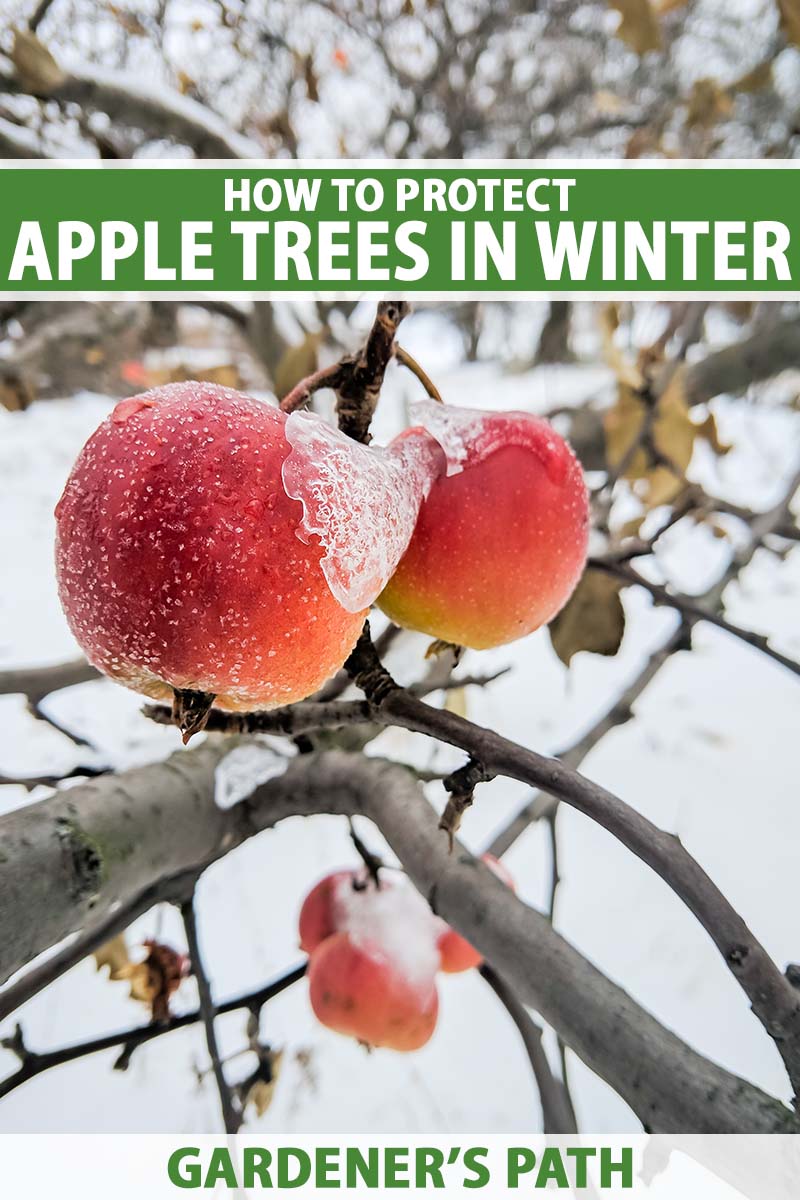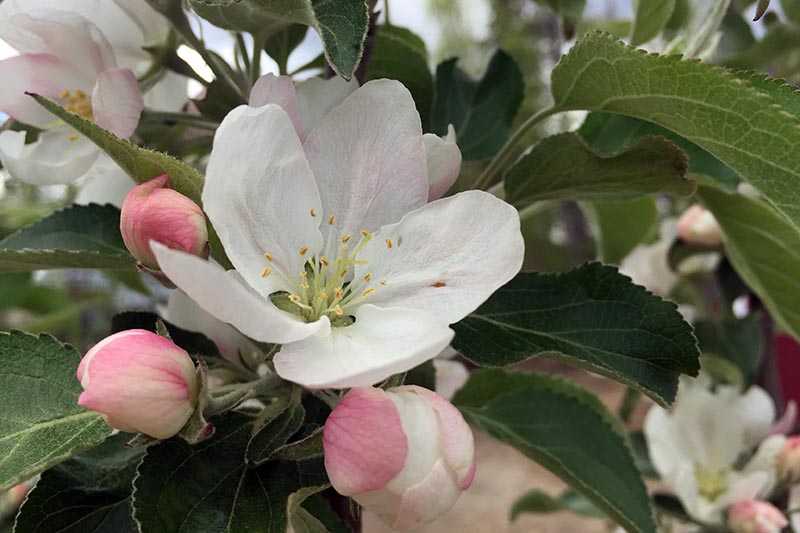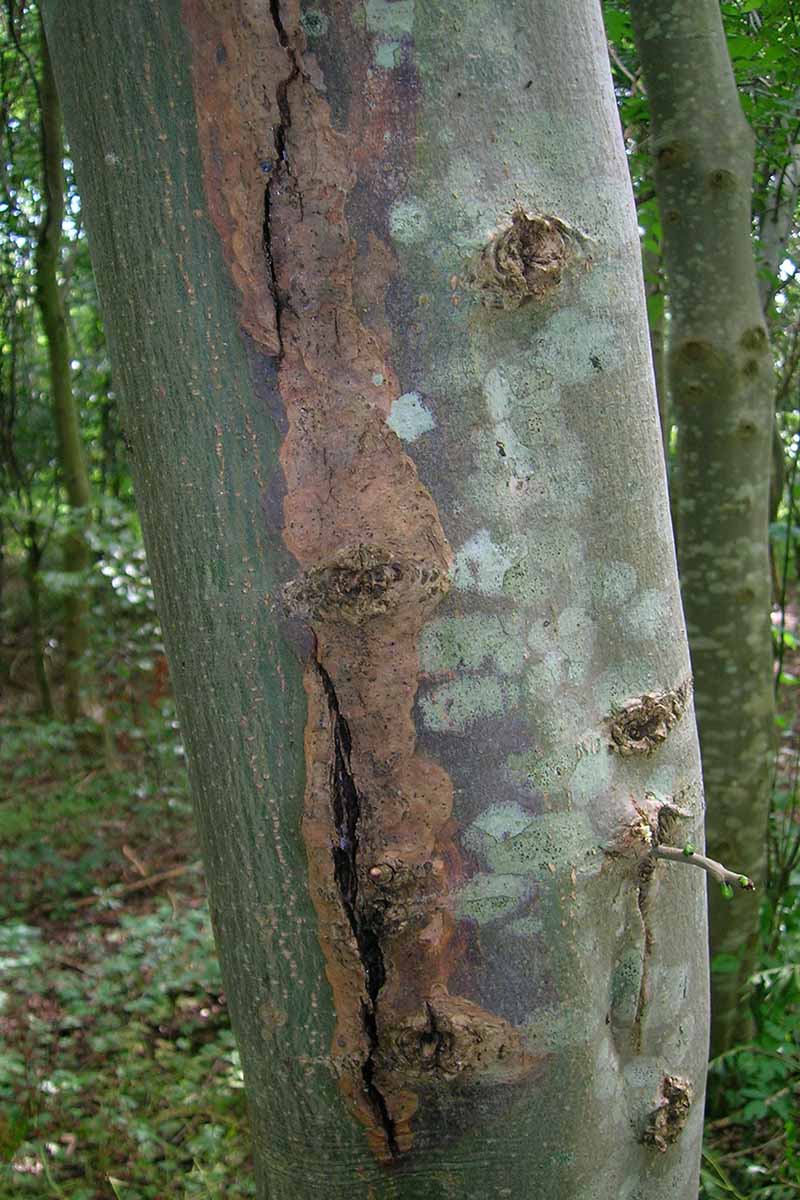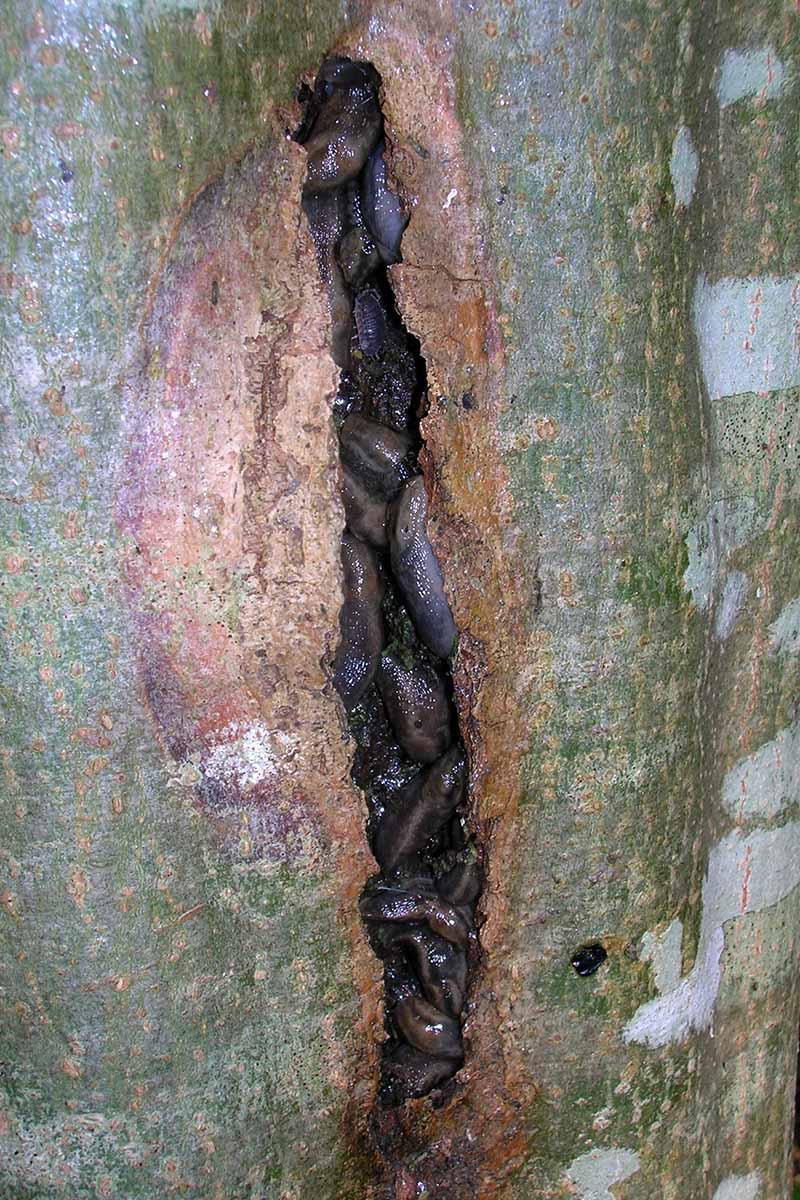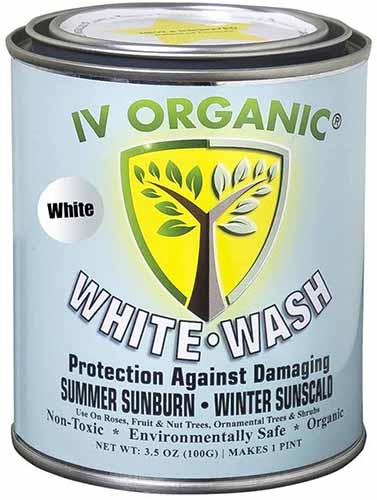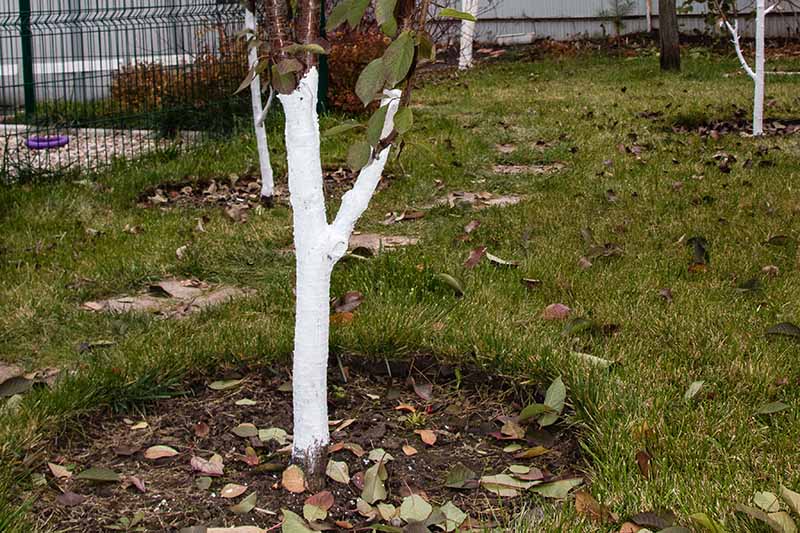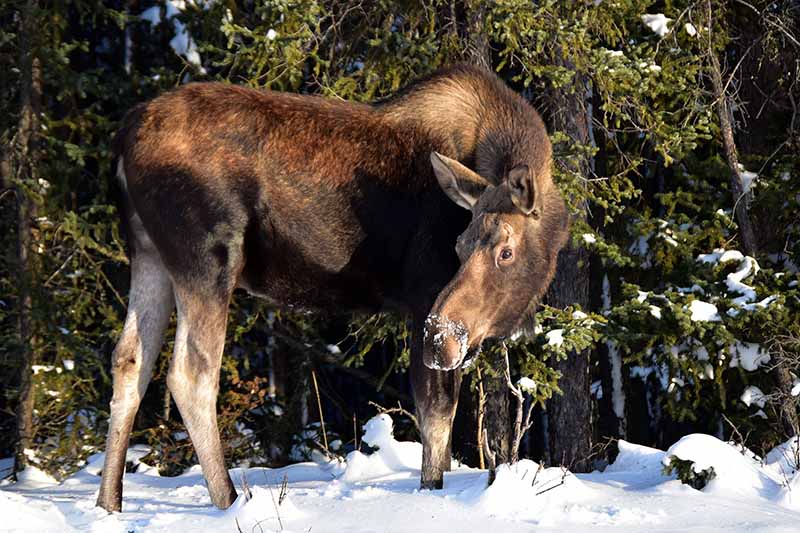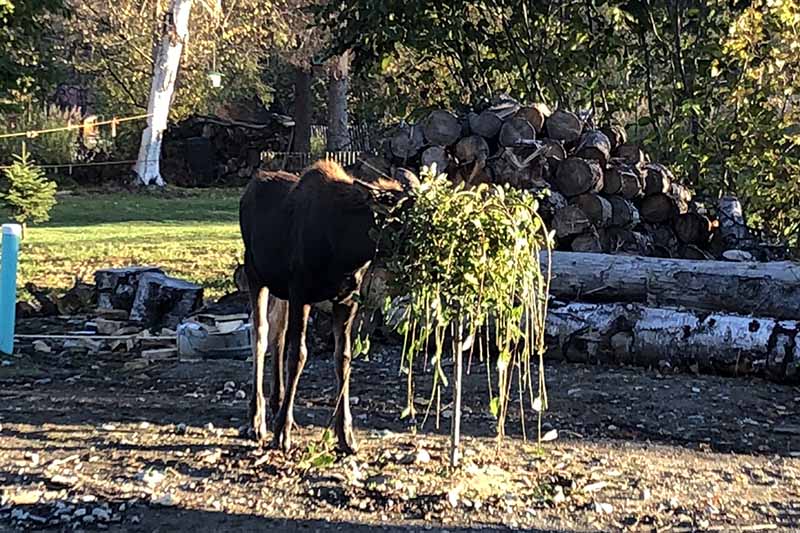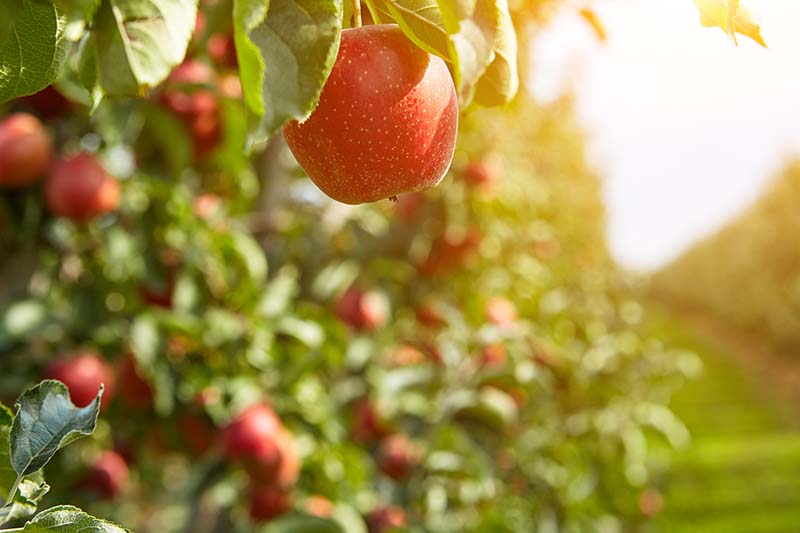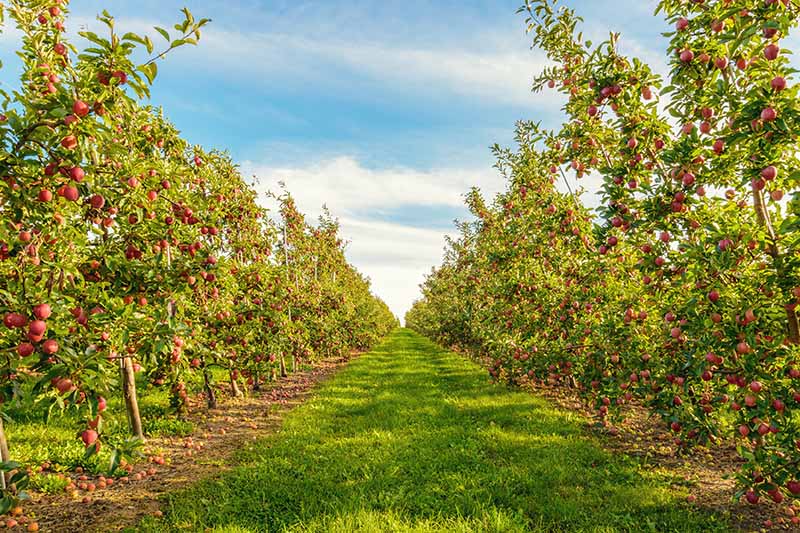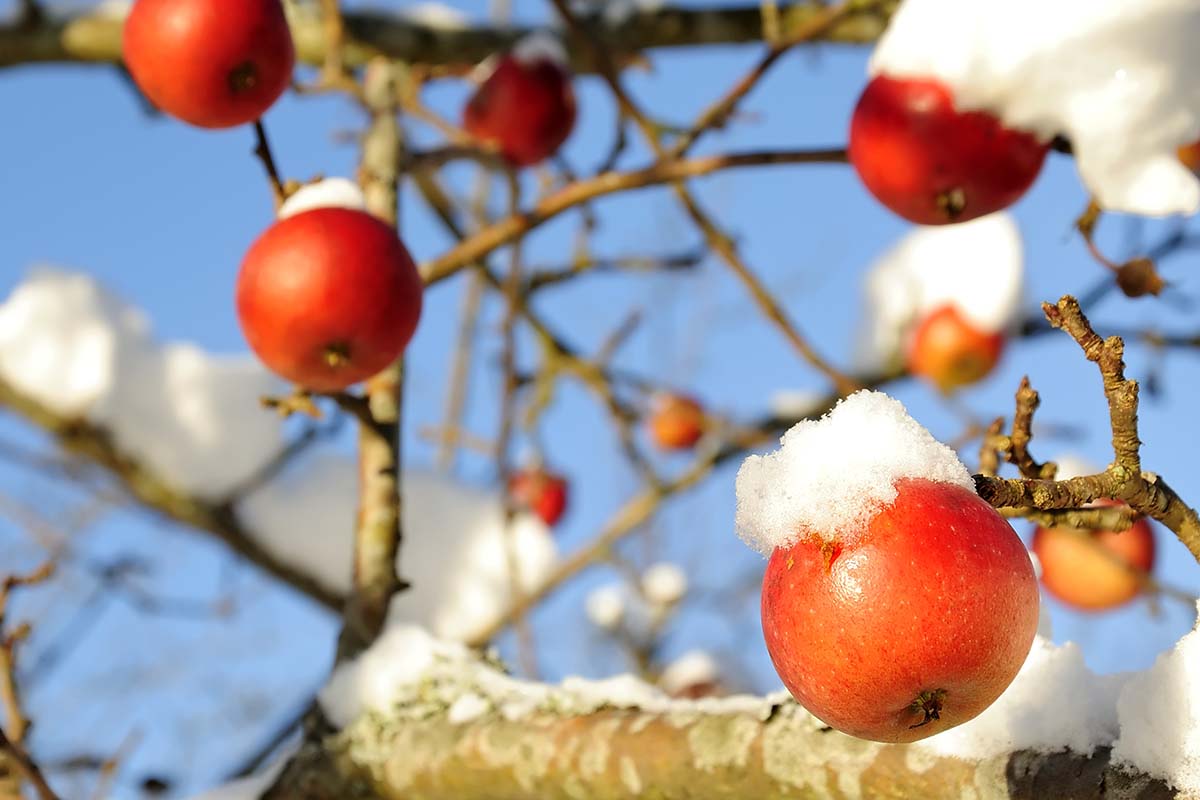But they clearly didn’t care about a young woman’s request to keep the forest as intact as possible, and razed almost the entire lot. It filled me with grief, followed by a desire to plant trees – lots of them. We planted eleven that summer. Of those, three were apples. Just smelling the sweet blooms filled me with indescribable joy, and I hoped hard that the flowers would receive the pollination they needed to produce apples. Since we had planted three different cultivars, providing plenty of opportunities for cross-pollination, I knew the chances were strong. And I was right. We picked our first harvest in early fall and made a deliciously tart apple crisp with them, made sweeter by the fact that our own trees had produced the fruit. We link to vendors to help you find relevant products. If you buy from one of our links, we may earn a commission. Not a week later, two moose came through the front yard and ate all the leaves and many of the branches from my beautiful young saplings. Would they live through periods of below-zero temperatures with moose injuries on their bark? I wanted my little guys to survive and thrive. The moose, meanwhile, were quite pleased with their handiwork and even used our backyard as a place to sleep off their full bellies. But I set about learning everything I could about how to keep apple trees safe, warm, and protected from animals during winter. In this article, you’ll learn everything you need to know to overwinter them in even the bitterest climates. A big part of that is knowing how to keep them safe from hungry moose, deer, and other critters! Let’s get started.
A Note on Cultivars
Apple trees are already primed to survive the winter because they typically need anywhere from 500 to 1,000 “chill hours” – temperatures between 32 and 45°F – in order to produce blooms in the spring. But some varieties are more winter-hardy than others. So when you’re looking for cultivars to plant in your yard, make sure you select the ones that are hardy in your region. Even if you shop at a local gardening store, double-check the labels. You can’t always count on nurseries to carry only saplings that do best in your USDA Hardiness Zone. This is the number one way to ensure that you plant apples that can tolerate whatever type of winter your state throws at them, as long as it’s typical for the region. Because of this, when I was shopping, I selected three Canadian-bred cultivars: ‘Goodland,’ ‘Battleford,’ and ‘Norkent.’ Each not only grows well in Zone 4 where I live, but ‘Norkent’ and ‘Battleford’ are hardy down to Zone 2, and ‘Goodland’ can thrive in Zone 3. This means these apples are hardy to -50° or even -40°F. It has never, to the best of my knowledge, reached that temperature where I live. (Thank goodness!) But it does get close enough to make me thankful that my trees can easily withstand sub-zero temperatures.
Providing Extra Protection Against Cold Weather
Even with cultivars that don’t mind a deep chill, your apples can be susceptible to several winter maladies. Let’s take a look at the most common issues to watch out for.
Addressing Sunscald
Sunscald is basically sunburn on the thin bark of a younger fruit tree. It happens when warm days and cold nights (or similarly extreme variations in temperature) cause young trunks to absorb extra heat, coaxing the outer tissues out of dormancy. But the roots, buried in the cold, frozen ground, can’t provide the needed moisture. This can kill the outer bark, resulting in visible dead patches come springtime. Fluctuations in temperature can also cause the tree to expand and shrink too quickly, resulting in cracks in the bark and limbs. And cracked bark allows apple borers and other pests to get into the trunk and wreak havoc. There’s no way to cure winter sunscald, but you can keep the tree healthy so that it will heal itself within a year or so. To keep it healthy, don’t prune it the spring after it gets sunscald. With a fuller crown, it can provide more food for the roots, which helps to keep it healthy enough to survive sunscald damage. You can also brush organic, water-based white latex paint diluted with water over the bottom half of the trunk. As a general rule, wrap your trunks two weeks before your area’s first frost date, and remove the covering two weeks after the last average frost date. Organic White Wash White paint reflects light and heat from the sun away from the bark, preventing sunscald. The paint will eventually fade, so you’ll need to re-paint each year in the late fall. Vinyl Tree Guard Make sure the guard or wrap goes an inch below the soil surface and rises to just below the first branches. And don’t forget to remove the guards once winter ends. These can actually invite pests to visit rather than repelling them, and you don’t want to leave them on longer than you need to. If you use a disposable wrap, make sure to replace it each year. Reusable guards should be washed and stored in a dry area until they’re needed again.
Protecting Roots
Keep your trees well watered all season until the ground begins to freeze. “Heading into the winter with dry roots can mean major trouble for trees in the spring,” explains tree care expert John Lang in a guest article for the Arbor Day Foundation. Make sure to water them in between freezes as well, and keep an eye out for surprise thaws and warm, dry spells in the winter – during which you should give those ones a good soaking. It never hurts to give your trees’ roots a little bit of extra warmth too, especially if your apples are under ten years old and don’t have deeply established root systems. In my state, snow is the best insulator. To protect my trees, I mulch them with wood chips in the fall and then let the cold white fluff do its work. The only thing you need to watch out for with snow is the amount that accumulates on the branches. If you notice that the slender branches seem droopy with snow, brush it off to rid the branch of the extra weight. This will keep them from breaking. If you don’t get much snow, you can use wood chips, bark, or straw to mulch your trees. Add a six- to eight-inch-deep layer of mulch around the entire perimeter of the drip line, filling it in all the way to about two inches from the trunk. Avoid putting mulch right up against the trunk, as this can cause moisture to build up on the bark, inviting fungal diseases to take hold. Protecting the root system can help keep the tree alive during extreme or prolonged cold snaps that can cause branch dieback. If your tree does lose a few limbs to the cold, you won’t notice it until springtime, when the dead branches fail to leaf out. Prune the dead branches away with clean, sterile pruning shears in the spring – about two weeks after your area’s average last frost date. For additional wintertime root protection, and to help restore the health of winter-damaged trees, fertilize the roots with a balanced 10-10-10 (NPK) fertilizer in the early spring, and keep a close eye out for pests or signs of fungal infections like powdery mildew. Speaking of pests… the other half of winter care protection involves keeping hungry creatures away from your trees.
Keeping Critters Away
In Alaska, moose are a common sight. But more so than ever in the fall and winter, when they have much less vegetation to eat in the foothills and mountains. I see moose in my yard at least once a week during the winter, if not more often. And if I don’t see the animals themselves, I can always spot fresh tracks in the snow. And as I found out on that fateful fall day when the moose ate my new saplings, they will eat any living thing in your yard, wild or not. Those who live in other states may not see their trees fall prey to moose, but you may have hungry deer in the area. Or maybe you encounter rabbits and voles who will chew on the base of the trunks. When I first brought my new saplings home, I hated the idea of erecting fences around them. But this is what other Alaskans advised me to do, citing horror stories about moose gobbling up young trees whole. To avoid building eleven new fences, I researched the available deterrents instead. Some experienced gardeners advised spooking the moose with bars of soap hung on the branches, but I decided not to count on that. Besides, tying something on a young branch can hurt it. Instead, I bought Plantskydd. An organic spray made of dried pig’s blood, this stuff makes moose, elk, deer, voles, rabbits, mice, squirrels, chipmunks, and all other such creatures believe predators are near. I had used Plantskydd on my apple trees before the moose ate them, but it had been a long time since the last application. The moment I saw my stripped saplings – while the moose were still present in my yard – I went out with bear spray in case of a moose attack, and Plantskydd spray to protect my trees. But the moose didn’t mind the smell of fresh Plantskydd much and started chomping my willow anyway. To be fair, Plantskydd works best once it’s dry. Spray the trees until they’re damp but not dripping. The Plantskydd will dot your leaves and branches with brown speckles, which isn’t pretty. Plantskydd Animal Repellent If it does get on the fruit, don’t worry too much. Plantskydd is considered safe for fruits, veggies, pets, and people to come into contact with. But it’s gross to eat, of course, so wash carefully before munching on those apples. But the speckles fade with rain and time, although the effectiveness of the spray will not fade with rain and won’t fade with time unless there is new growth. If you have a serious problem with moose, deer, or rabbits eating your apple trees and sprays don’t help, I recommend fencing.
Build a Fence
Yes, it’s a pain in the rear. And yes, it works. The night the moose ate my apple trees and then gobbled up the Plantskydd-drenched willow limbs, I went to The Home Depot and bought fencing materials. My husband and I spent three hours building four fences around our apples and plums. Using rocks to mark a triangle of three post holes around each tree, we dug down about twelve inches and then inserted the U-posts. We bought steel welded wire, steel fence U-posts, and zip ties from the Home Depot. And then we gathered the necessary tools: a mallet, wire-cutting scissors, and a shovel. You could also use a post hole digger, if you have one. After wrapping the fencing around the posts, we clipped the wire and tied everything together. You could also build a fence around your entire orchard instead of constructing one around each individual tree. But keep in mind, moose and deer can jump fences and access your trees if there’s room inside the fenced area for them to roam in. The day after we put up these fences, a moose walked toward the apples and then balked, and ran in a different direction upon seeing the fence. You bet I was grinning from the window as I massaged my sore arms! Critters haven’t touched my precious fruit saplings since. (The backyard trees are a different story for another day…) Because I was so paranoid about moose eating the trunks, I wrapped chicken wire around the bottom of the trunks as well, without letting it touch the bark. Rabbits, squirrels, and very determined moose or deer might bend down and snap your tree at the base of its trunk, so adding a little extra protection isn’t a bad idea. In the long run, it’s worth the extra effort to provide protection with fencing. I actually still spray with Plantskydd as well, to make sure they’re doubly protected. For full instructions on how to build a fence around your apples, check out our guide to keeping moose out of your yard or garden.
Protecting Against Insect Pests and Disease Pathogens
Smaller insect pests like worms, ants, moths, and caterpillars may try to climb onto the trunks and search for a crack or crevice to call home for the winter. This will prevent maggots and other pests from setting up camp in rotten fruit. Tree Tanglefoot Another important thing to do is clean up the area around the base of the trunk at the end of the season. Clear fallen apples, leaves, weeds, and anything other than the mulch you put down. Repeat regularly throughout the growing season as well. It will also keep rotten fruit or leaves infected with apple scab or bot rot from sending spores up to otherwise healthy leaves and infecting them after overwintering in the plant debris. So here’s a quick, easy-to-digest recap: For prevention, you should:
Only buy varieties that grow best in your specific USDA Hardiness Zone.Wrap with protective guards or whitewash for protection against sunscald.Mulch the area within the drip line with 6-8 inches of organic mulch.Spray branches, trunks, and leaves with Plantskydd.Build fences around young saplings for extra protection.Use a sticky solution to trap insects.Keep the area beneath trees free of weeds and plant debris.
To keep prevent further damage to affected trees, you can:
Whitewash trunks affected by sunscald for protection against pests.Avoid pruning those suffering from sunscald.In early spring, two weeks after the average last frost date, prune away branches that have died due to branch dieback as a result of extreme cold.Spray with Plantskydd every month.Build fences as needed if the ground is thawed enough.
It’s worth the effort to keep your apple trees warm and safe during the winter so you can enjoy buckets of sweet fruit the following fall. I promise! Do you grow apples? What have you learned about keeping them healthy during the winter? Let us know in the comments section below! And for more information about growing apples in your yard, check out these guides next:
Growing Apple Trees: A Fruitful PrimerWhen and How to Harvest Apples19 Apple Tree Varieties That’ll Knock Your Socks Off
